
Visiting the Peace Park
Nagasaki Streetcars
Tateyama Air Defense Command Bunker
I'm in Nagasaki and I've just been
to the
Air Defense Command Bunker
in Tateyama chōme.
The larger part of that was used by the military, but some
was used by the Nagasaki city government and the
Nagasaki Prefecture government.
It wasn't heavily damaged by the nuclear bomb because
of the mountainous terrain and the aiming error in the
bomb drop.
I will go by streetcar and foot first to the main train
station, and then on north to the
hypocenter,
"Ground Zero" or the point directly below where the
bomb exploded.
There are two parks there with some interesting memorials.
Nagasaki has done what
Hiroshima
and
San Francisco
have done.
As other cities retire their streetcar systems,
these cities buy the old cars and become
operating streetcar history museums.
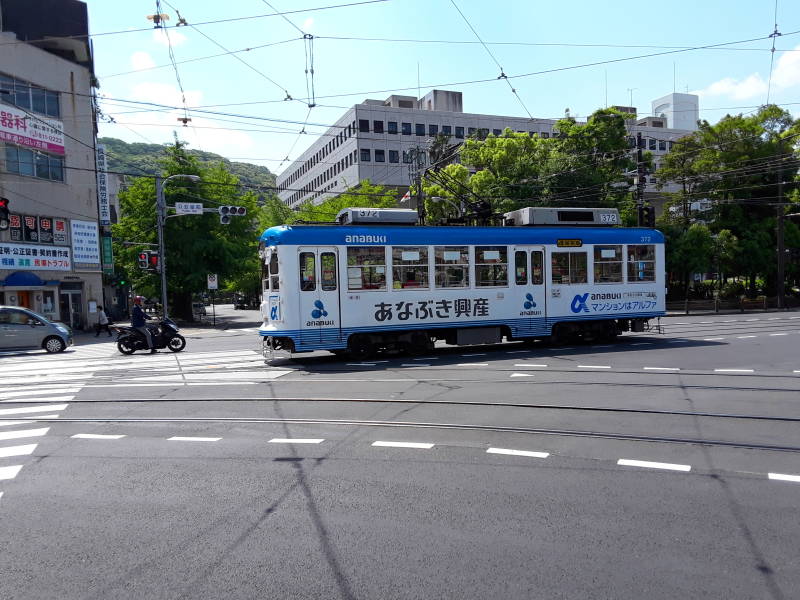
A few modern streetcars operate in Nagasaki. But they're not as interesting.
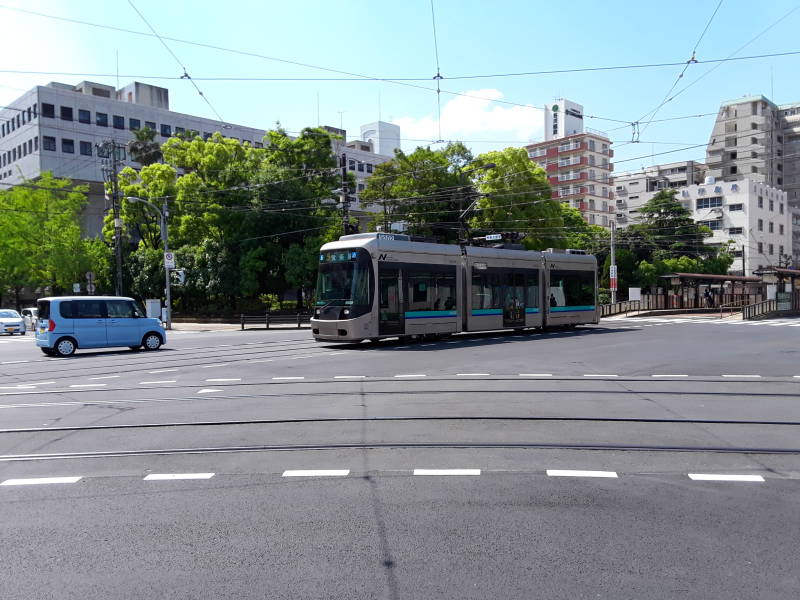
This is more like it:
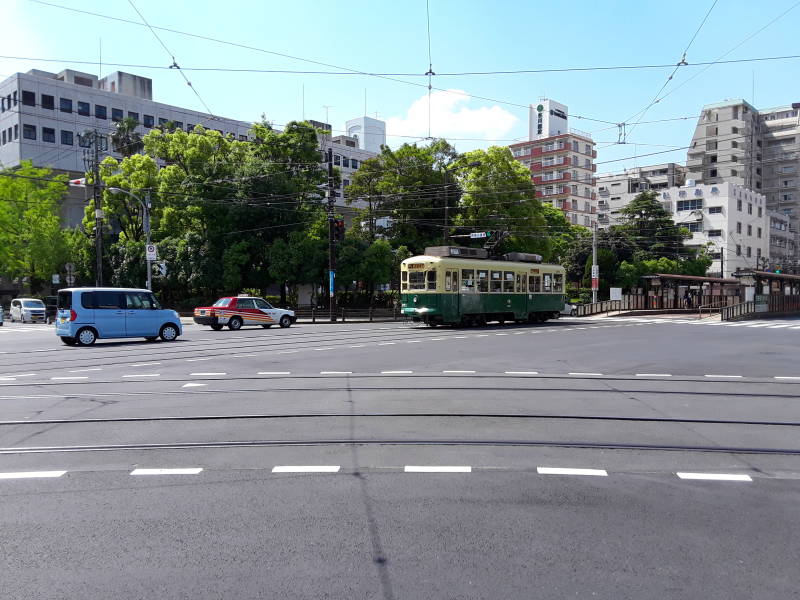
You can ride in style.
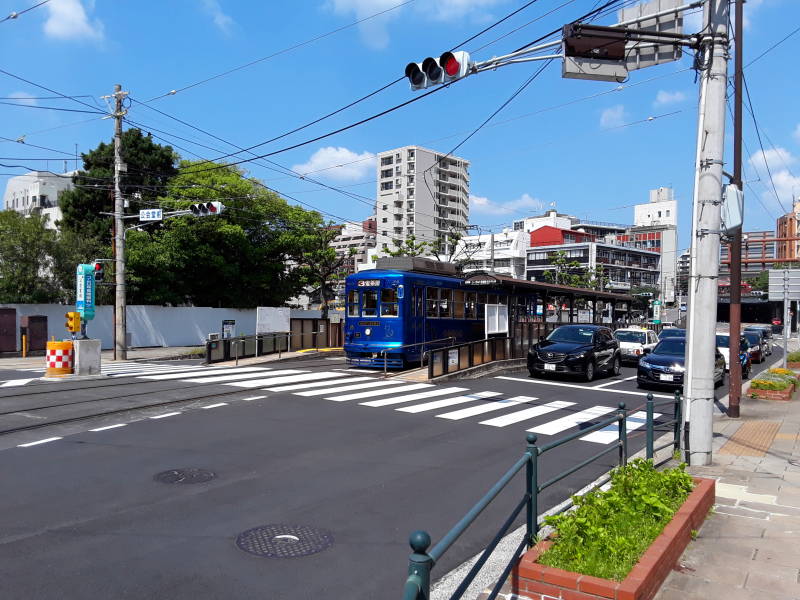
This one is leaving a platform near where I'm staying at the Akari Hostel.

I have arrived at the passenger train station in Nagasaki. As usual, there are pedestrian bridges above busy streets, reached by staircases.
I first arrived in Nagasaki on a dark and wet day — low clouds and rain. The tops of those two spherical fuel tanks were disappearing into the bottom of the clouds, and the mountains in the distance were not visible at all.
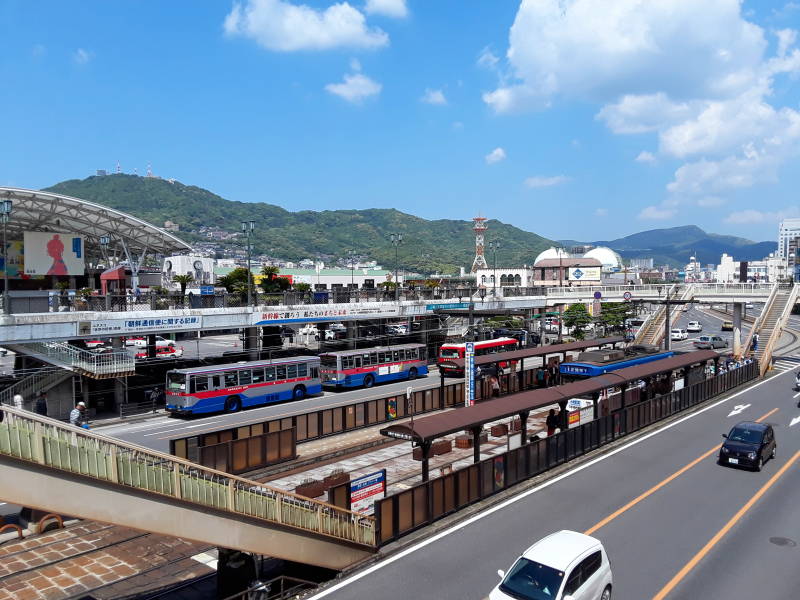
Multiple streetcar lines stop here. The train station is on our left, and the main bus station is in the light pink building with the Mitsubishi Electric sign on top.
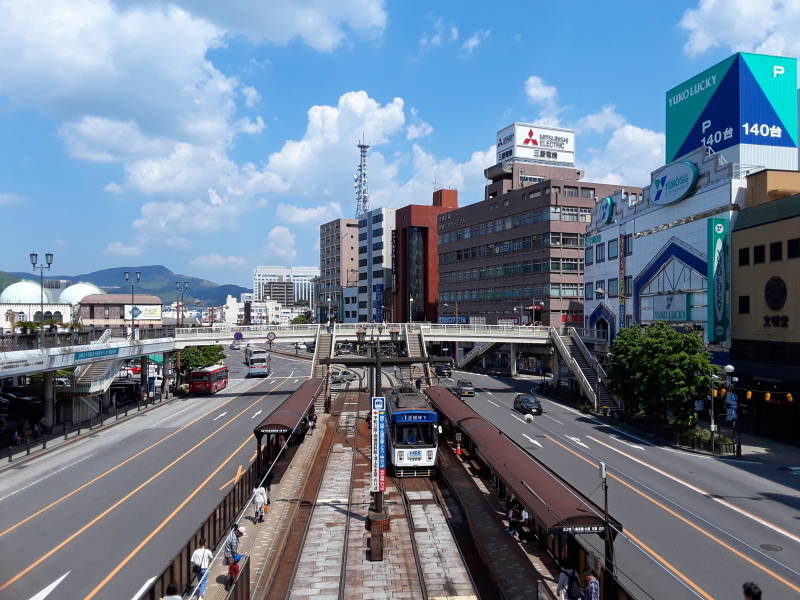
Here's the view from up on the bridges near the train station. The ridgeline in the background was invisible when I arrived, as the buildings across the main street almost disappeared into the low clouds.
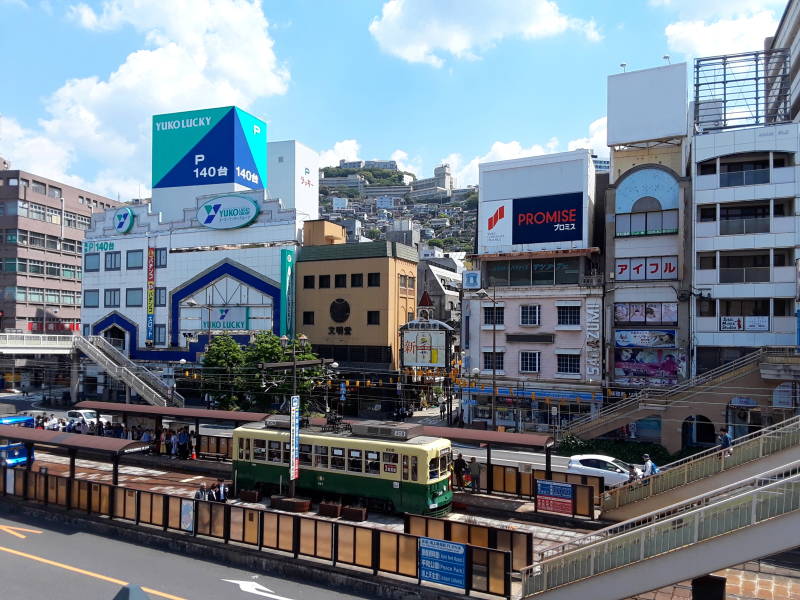
I got a salmon o-nigiri or triangular fish ball and green tea at the station. A late breakfast, on a bench on a pedestrian bridge between the train station and bus station.
This one has the Japanese word for "salmon" in hiragana, used to phonetically spell Japanese words — さけ — sa-ke. Salmon is the finest of the fishes, so that's an important word to learn. Not all brands include the name in rōmaji, let alone actual English like this one.
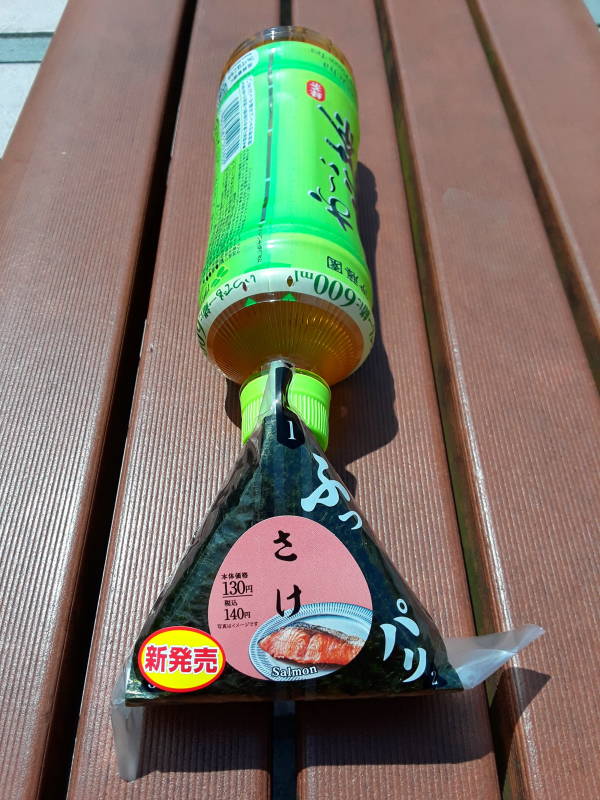
To the Bus Station
I crossed over to the bus station to investigate bus schedules, because I would need to go to the airport in a few days.
I had been making my way by train southwest from Tōkyō on this trip, with stops in Ise, Kyōto, Takamatsu, Naoshima, Hiroshima, and Fukuoka. Some trips on the Shinkansen, others on regular Express trains, and some by bus.
But from Nagasaki, down at the southwest end of the four largest Home Islands, I would fly back to Tōkyō. With a foreign passport I could buy an air ticket for about US$ 100, much cheaper than stringing together multiple shinkansen rides. And even for a local, a flight to Tōkyō Haneda Airport would be much cheaper than trains.
There are frequent trips to the airport from 0550 to 1910, the last one would get you there for the evening's last flight out.
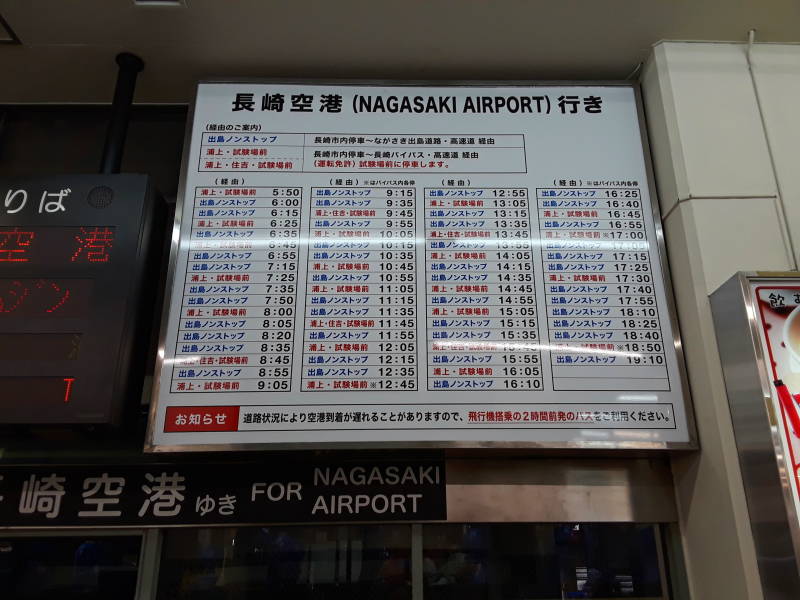
This is the main bus station in Nagasaki, so there are plenty of buses to other places in Kyūshū.

And, even more.
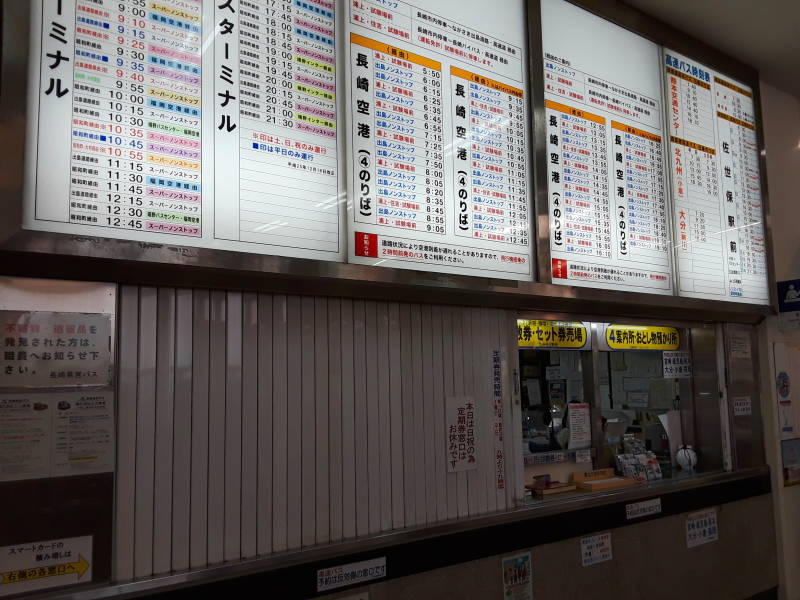
People patiently wait for their bus.
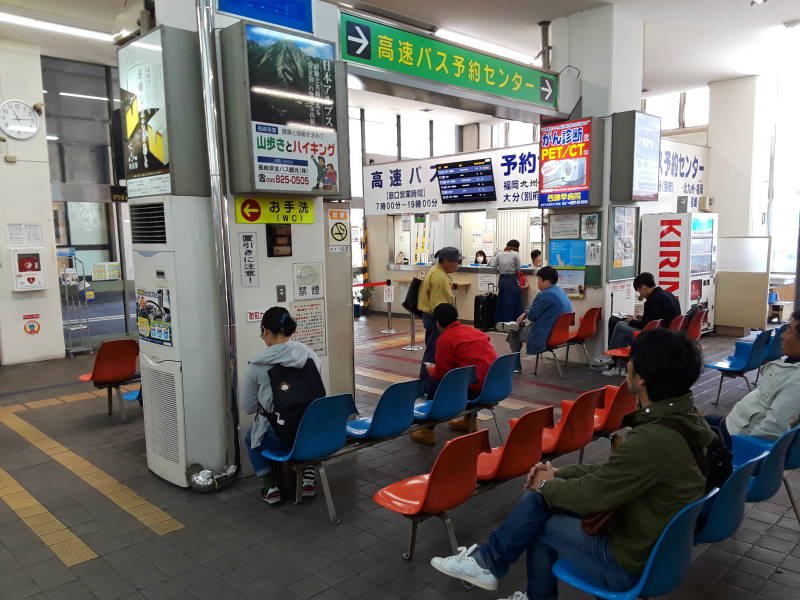
Continuing North to the Peace Park
Here's a Japanese gas station.
My grandfather owned a gas station. He would recognize all of this, and find it exotic, all at the same time.
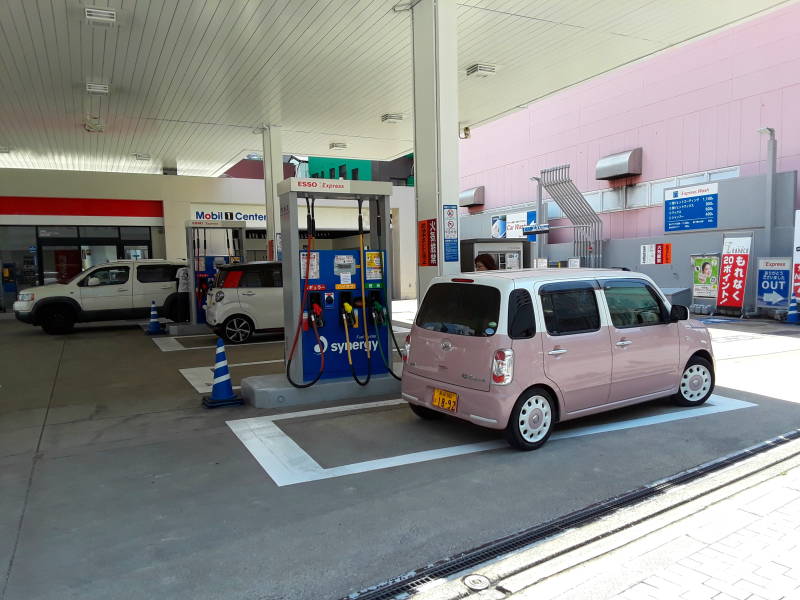
Here is some totally calm advertising.
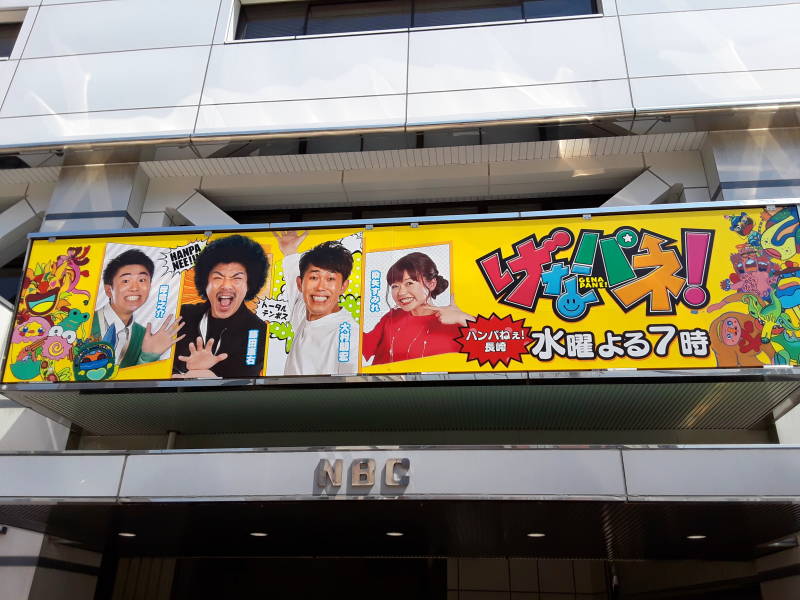
And some pinup magazines in a convenience store.
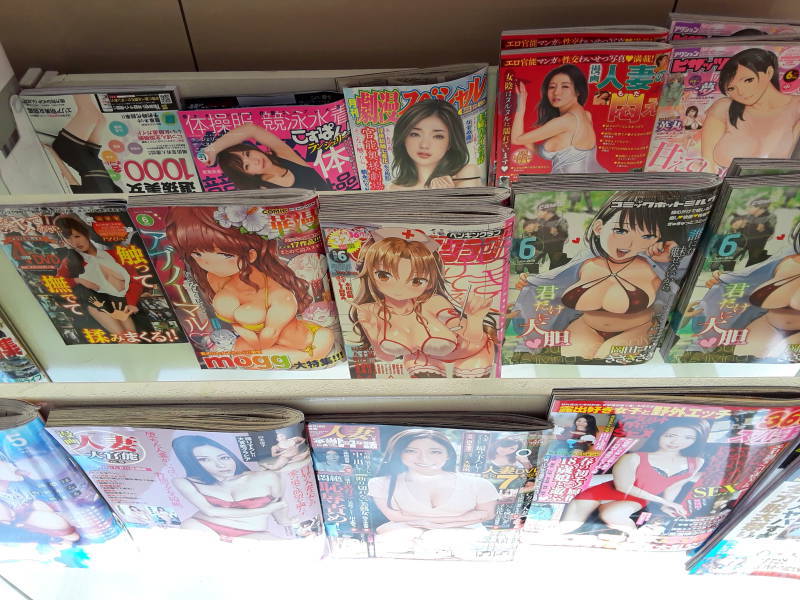
Japan has vending machines for everything. The first one here has mostly beer.
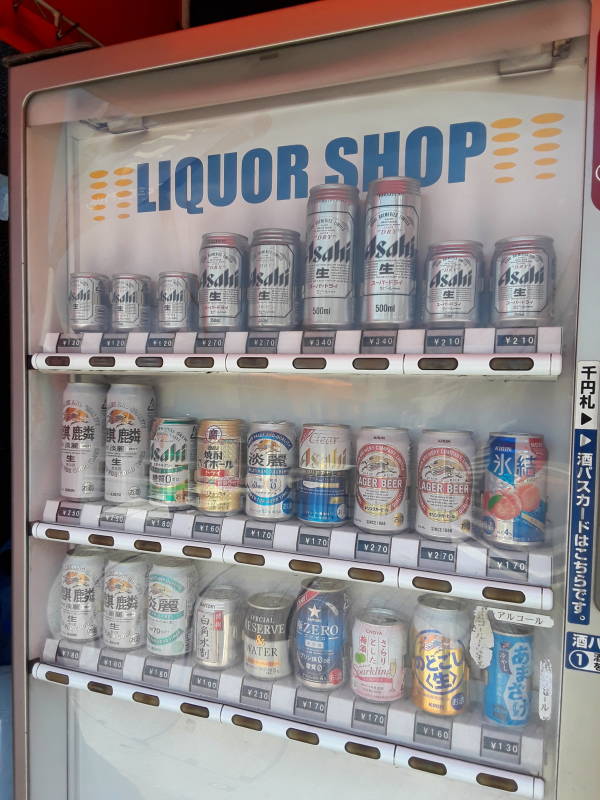
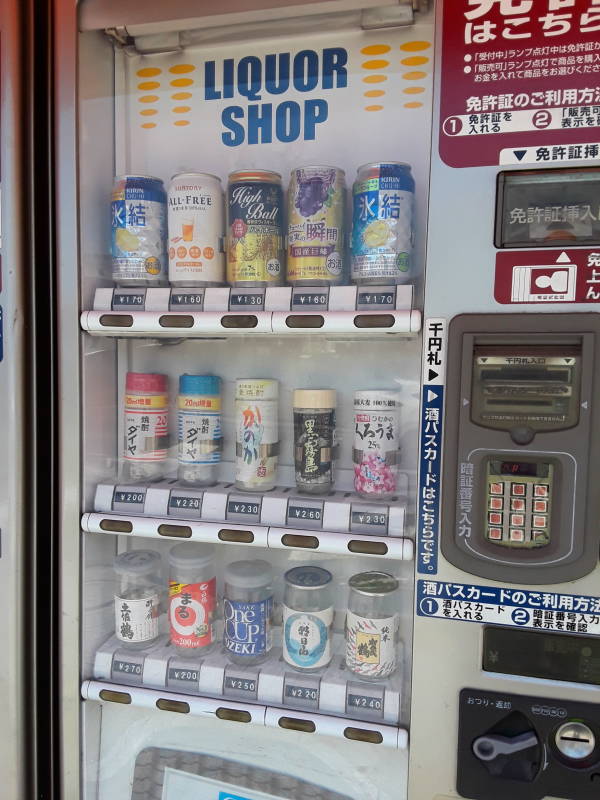
The second one above has highballs on the first row and jars of sake on the third row. I don't know what those are on the second row. Sounding out the kana, they're taiya, taiya, kanoka, an all-kanji mystery, and, I think, kuouma, from left to right.
The next machine, seen below, has hangover cures. The top row touts 1000 mg of taurine plus vitamins B1, B2, and B6.
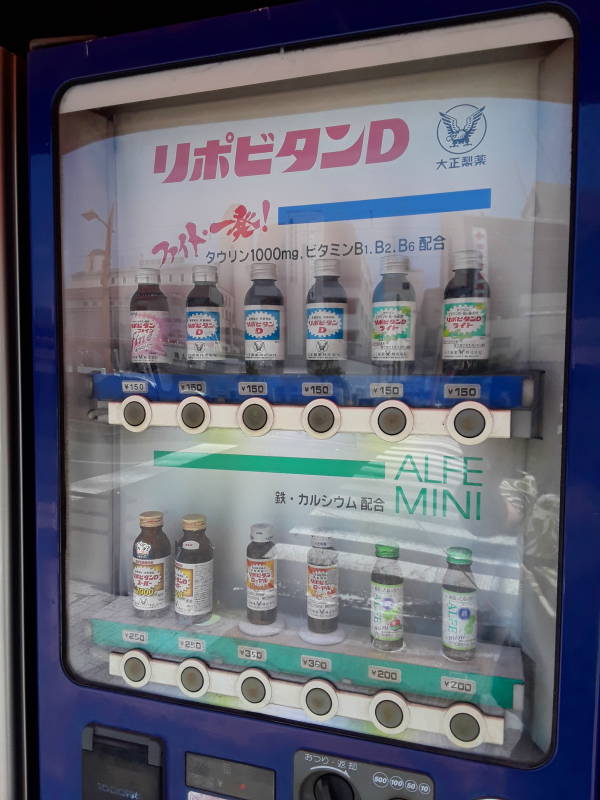
To the Hypocenter
Allied Cryptanalysis and the Atomic BombsThe Allies were reading Japanese military communication, but also their diplomatic traffic. The Foreign Ministry traffic revealed that Japan's military planned a suicidal defense of the Home Islands that they anticipated would kill up to 20 million civilians, and Japan's inevitable defeat would then be followed by a famine that would kill up to another 10 million civilians.
They planned to sacrifice up to 30 million civilians, because they were terrified that the Emperor would be tried for war crimes. That was getting underway for those members of the German leadership that hadn't either committed suicide or fled to South America.
But, if the Japanese Emperor, the descendant of the deities who had created the universe, were executed, that would exterminate the Japanese people, erase Japanese culture, and destroy the universe itself. So the military leaders were going to send 20 million civilians marching into death with rakes and shovels as weapons, with another 10 million lined up to starve in the coming months.
The Allies knew this, but wouldn't admit that they knew it in order to protect some secrets.
First, that they had been reading Japanese diplomatic traffic, which exposed other countries' secrets.
And, more importantly, that both Germany and Japan had made some design and procedural errors that made Allied cryptanalysis practical.
So, Japan has always said that the nuclear bombings of Hiroshima and Nagasaki were war crimes, atrocities, to have something to trade against the Emperor's safety. To protect the cryptanalytic secrets, the U.S. played along with those accusations.
Meanwhile, one incendiary bombing raid on Tōkyō on 9-10 March 1945 killed more Japanese civilians, with a higher percentage of civilian deaths, and destroyed a larger area, than the Hiroshima and Nagasaki bombs combined.
The U.S. had detected in the diplomatic traffic that the Emperor himself was willing to surrender. But the following two days saw three coup d'état attempts by senior military officers. They tried to prevent the surrender and take the Emperor into what the military called "protective custody".
U.S. President Harry Truman had issued a statement describing the Hiroshima bombing, and warning Japan of what would follow if they did not surrender. Truman's speech was broadcast to Japan every 15 minutes from a 50 kW medium-wave broadcast station on Saipan.
Allied cryptanalysis showed that the Japanese military leadership received these messages and decided on mokusatsu, "death by silence" for them.
Before dawn on August 9, the second U.S. nuclear bombing raid launched out of Tinian, about 2,400 km southeast of Tōkyō. The island is about 17×7 km, hosting two airfields. The larger, North Field, had four 2,600-meter runways.
The B-29 carrying the nuclear bomb was found to have a mechanical problem immediately before takeoff. The pump transferring fuel between two tanks had failed. The least bad solution was to fly the mission anyway, carrying fuel that they couldn't use.
The primary target on August 9th was Kokura, now known as Kita-Kyūshū, with one of Japan's largest munitions plants. There had been a fire-bombing raid by 224 B-29s on the nearby city of Yahata the day before. The fires were still burning, and their smoke obscured Kokura. The nuclear mission burned fuel circling over Kokura, then continued to Nagasaki, the secondary target. The intended target point was the Nagasaki Mitsubishi Steel Manufacturing and Arms Factory near the city center. This was close to where the rail yard south of today's station ended at the edge of the harbor.
Clouds largely covered Nagasaki, and radar-guided bombing was in its infancy. The mission commander was anxious to drop the bomb, as the alternative meant an emergency landing with an armed nuclear bomb while the plane was running out of fuel.
The clouds parted briefly, letting the bombardier spot a landmark in the industrial valley north of the harbor.
The result was that the bomb was dropped 3.4 kilometers to the north of the planned aim point, up the largest valley running north from the harbor. The harbor and city center, and the Tateyama bunker complex, were much farther from the fireball, shock wave, and radiation pulse. Parts of the city were shielded by the ridges along the east and west sides of the valley.
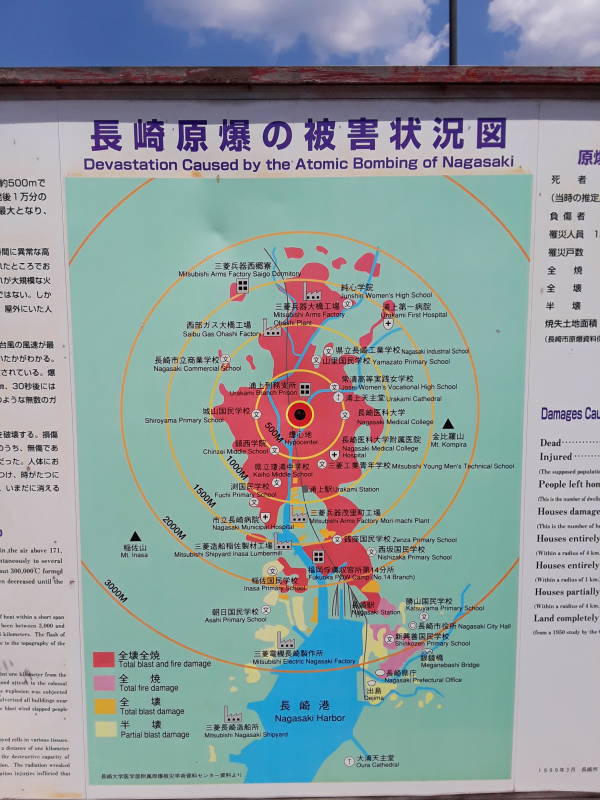
The train station is about 2.5 kilometers south of the hypocenter. By 12:30 p.m., its roof had caught fire. By nightfall, the main rail station building, the adjacent buildings housing track maintenance and power facilities, and the Nagasaki Railroad Medical Clinic building had all burned to the ground. All tile-roofed buildings except the Nagasaki Engine Yard Building were completely gutted.
Hypocenter Park
I'm entering the area around the Hypocenter Park and the Nagasaki National Peace Memorial Hall.
This memorial commemorates streetcar passengers and crews killed in the bombing.
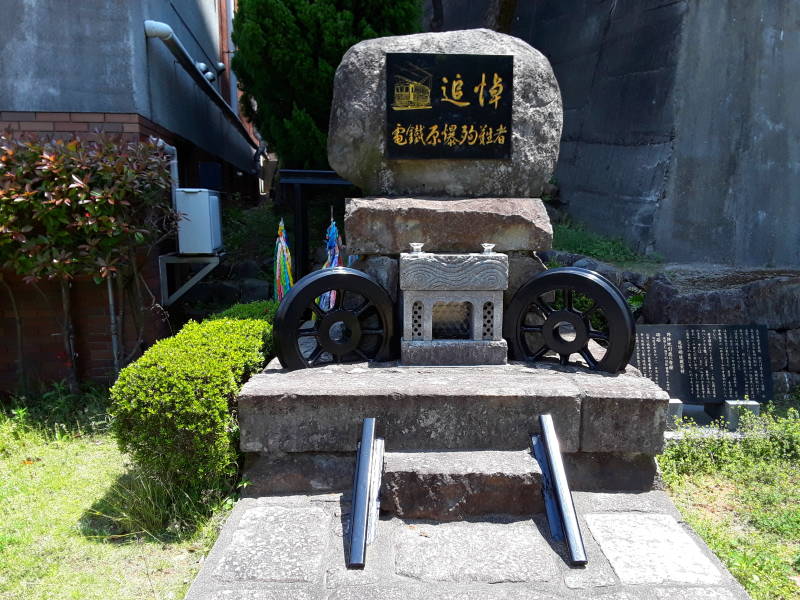
The English part of the sign was added in 2003:
Stone Embankment at Hamaguchi-machi Streetcar Stop
At the time of the nuclear bombing, the streetcar line extended from the Urakami Ekimae stop past the foot of the hill below Nagasaki Medical College Hospital (Present-day Nagasaki University Medical Department Hospital), and on to the terminal at Ohashi via the Hamaguchi-machi stops. Houses lined the tracks between the Hamaguchi-machi and Shimonokawa stops, and a stone embankment was constructed because of the different levels of the tracks and the road.
The Hamaguchi-machi stop, located about 400 meters south of the hypocenter, was completely destroyed by the explosion of the atomic bomb at 11:02 a.m., August 9, 1945. Four streetcars were exposed to the blast between the Hamaguchi-machi stop and the Matsuyama-machi stop near the hypocenter, and many passenger and employees were killed.
Part of the original embankment wall was moved to this site in 2000 as part of a project to widen national highway 206.
Nagasaki City installs this plaque as a prayer for the repose of the souls of the people who died here and to ensure that this tragedy is never repeated.
The below memorial is for the foreign war victims. Korean slave laborers, Chinese slave laborers, Allied prisoners of war, and so on.
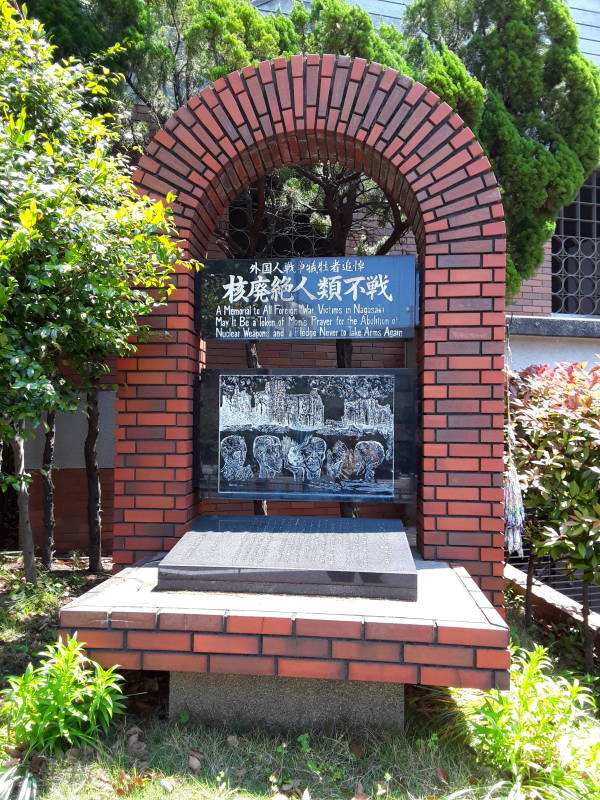
This is the main memorial as you enter the area around the Nagasaki Atomic Bomb Museum and the Hypocenter Park.
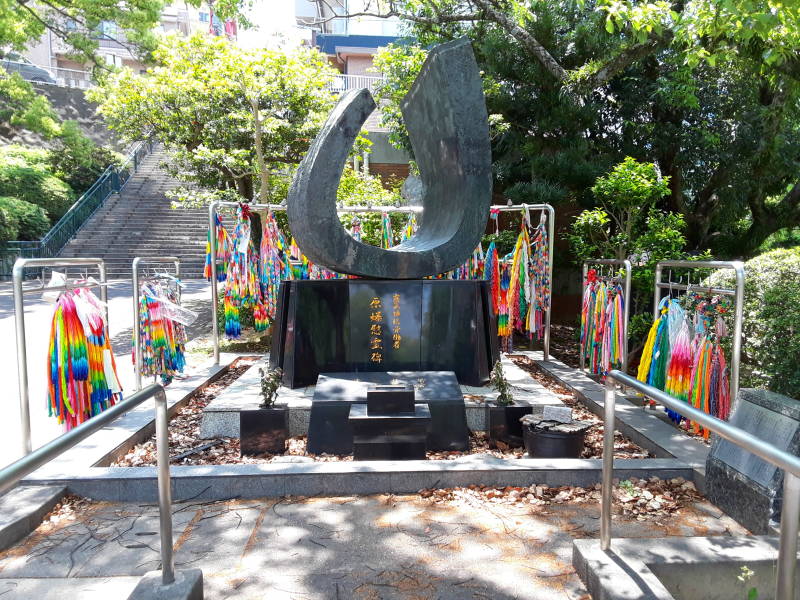
The multicolored streamers are each made from many origami cranes. Origami cranes have caught on as the standard offering of penance or memory.
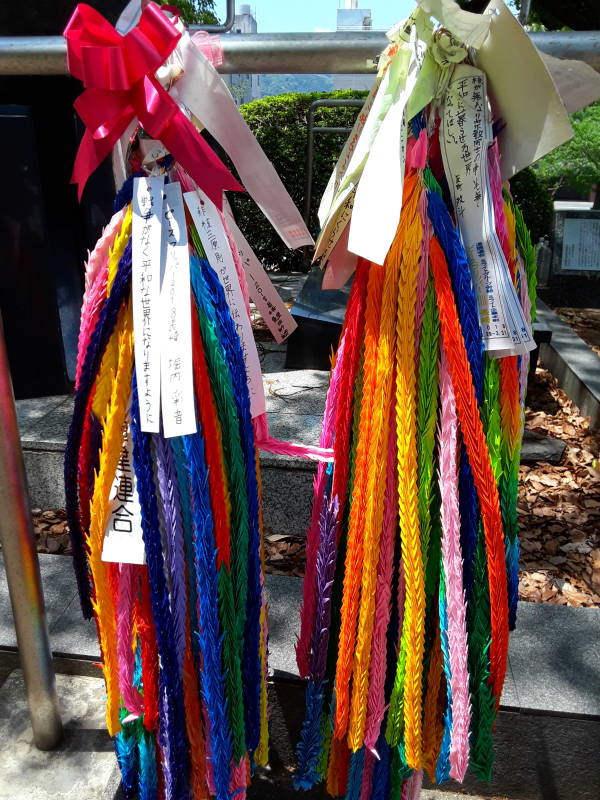
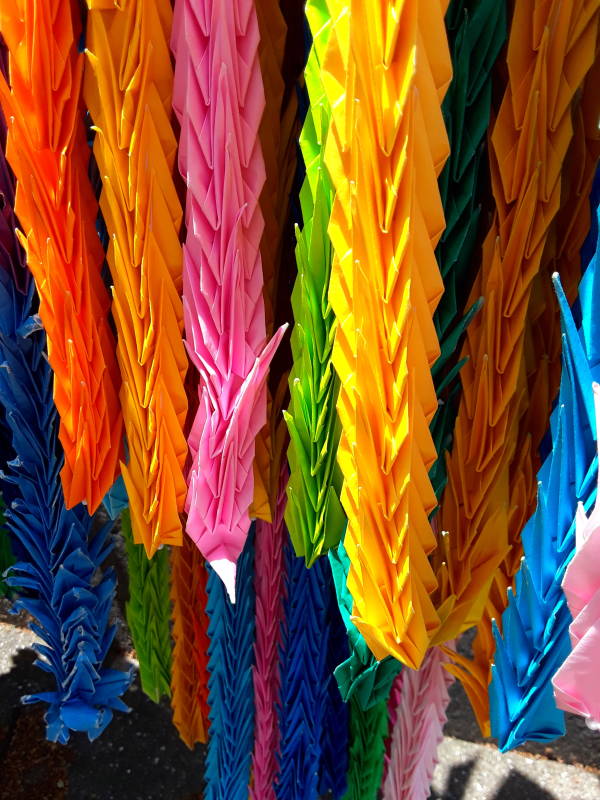
This is the memorial to the Korean victims of the Nagasaki bombing. It explains that the Japanese government annexed Korea in 1910. 2,365,263 Korean citizens were forcibly brought to Japan and put to slave labor.
In August 1945 there were about 70,000 enslaved Koreans in Nagasaki Prefecture, and over 31,000 in Nagasaki city. Of these, about 20,000 were exposed to the blast and radiation, and over half of those were instantly killed.
Of the 74,000 people who were in Nagasaki during the bombing and who had died by the end of December, a significant percentage of them were not Japanese. That may have to do with why the memorial here is more even-handed than the one in Hiroshima.
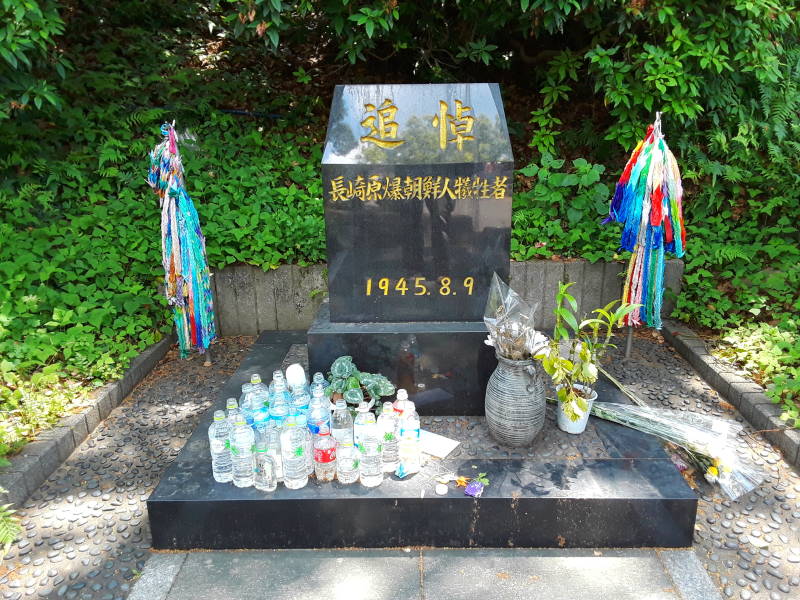
The Soviet Union was one of the first countries to provide a memorial. This memorial is near the Atomic Bomb Museum, at the south end of the Hypocenter Park.
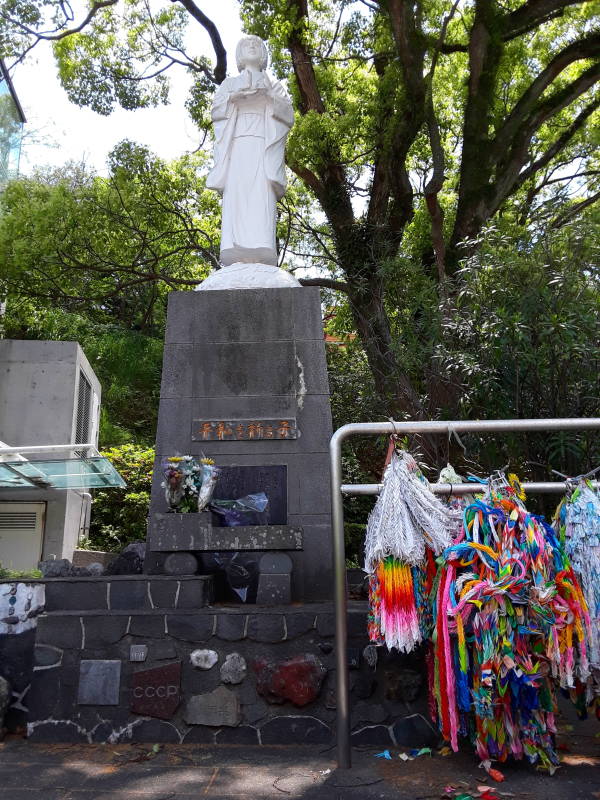
An obelisk marks the hypocenter, the point directly below where the bomb detonated.
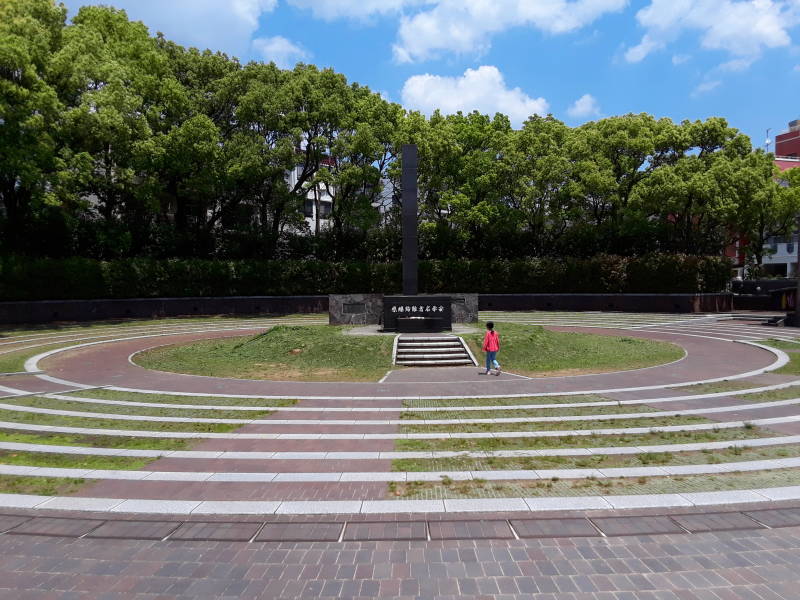
The bomb was an implosion design with a plutonium core, very similar to the device that had been tested at the Trinity site in New Mexico. The spherical plutonium pit was 92 mm in diameter and weighed 6.2 kg. It had a 20 mm polonium-beryllium neutron initiator at its center. The plutonium core was surrounded by a depleted uranium tamper, an aluminum pusher sphere around that, all wrapped in an outer layer of shaped charges.
The bomb exploded at an altitude of about 600 meters. The explosive charges created a shock wave moving inward and compressing the bomb components. That crushed the Be–210Po initiator, releasing a burst of neutrons into the plutonium pit, 96% 239Pu which had been compressed to twice its normal density by the massive uranium tamper, which was also a neutron reflector.
About 1 kg of the plutonium underwent fission, of which almost 1 gram of matter was converted to energy. The result was estimated to be 88 TJ of energy, equivalent to 21 kilotons of TNT.
e = mc2
0.978 g × (300,000,000 m/s)2 = 88 × 1015 J
35,000 to 40,000 people died immediately from the blast and heat and radiation. 60,000 to 80,000 people died overall.
Peace Park
The Nagasaki Peace Park is just up a short slope from the hypocenter. The park was established in 1955.
The city of Nagasaki established a "Peace Symbols Zone" along both sides of the park in 1978, and invited countries around the world to donate monuments. Given that the Hiroshima Peace Park had been focused on blaming the U.S. for atrocities in order to protect the Emperor, the results in Nagasaki were unsurprising. It's a Cold War flashback, with the Warsaw Pact piling on.
This is a second memorial from the Soviet Union. Statue of Peace, 1985, with a plaque reading "It shows a mother holding her infant child as an expression of love and peace."
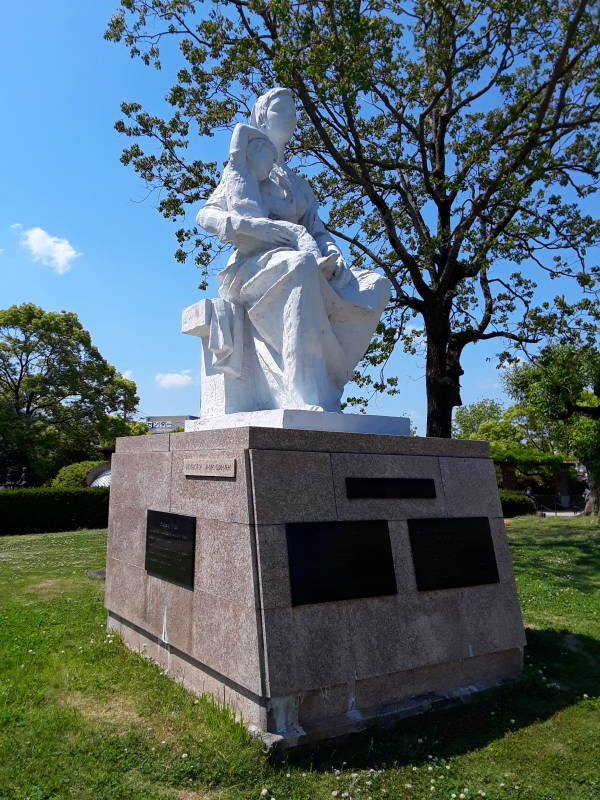
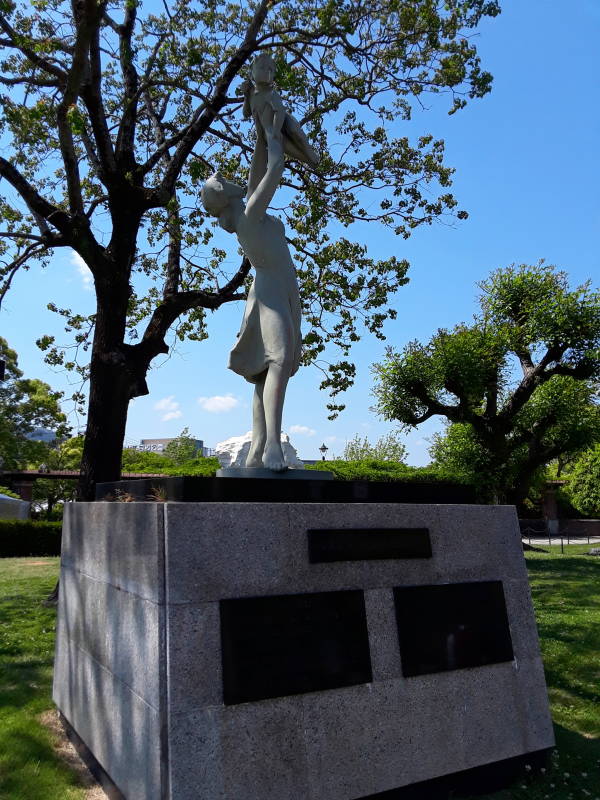
The last one above is from the Czechoslovak Socialist Republic. Joy of Life, 1980, with a plaque reading "It shows a jubilant mother lifting up her baby in her arms."
The next is from the German Democratic Republic, informally "East Germany". Monument of People's Friendship, 1981, with a plaque reading "The sculpture symbolizes the efforts for peace and a happy future of mankind, for the friendship among the peoples."
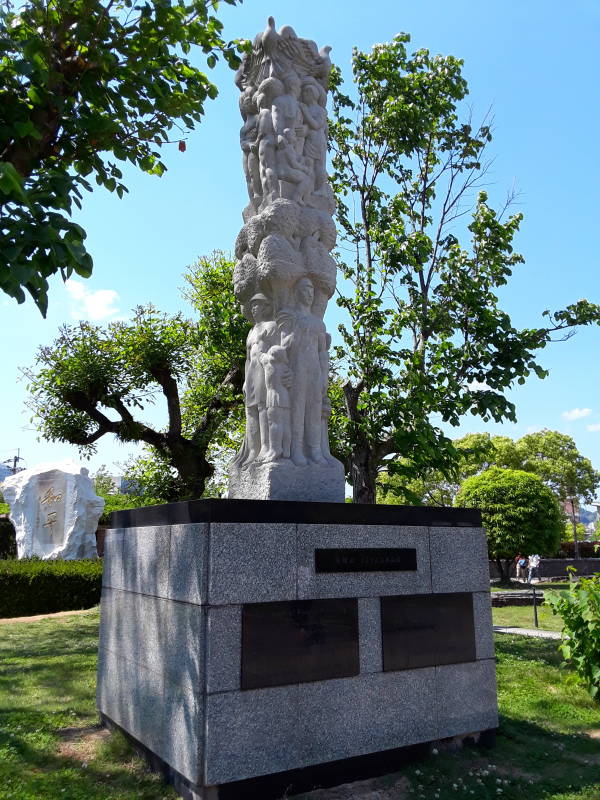

Above is A Call, 1980, from the People's Republic of Bulgaria. The plaque reads "The sculpture symbolizes the struggle of youth in search of peace and harmony, showing a woman with her arms stretched up."
Below is Sun Crane of Peace, 1988, from the Republic of Cuba. The plaque reads "The faces of the atomic bomb victims contained within the sun form a paper crane and symbolize the vital importance of peace."
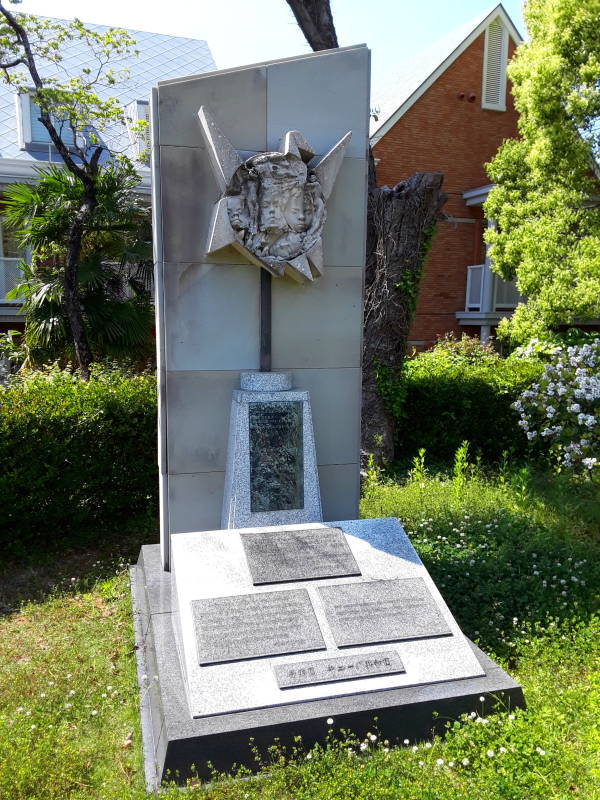
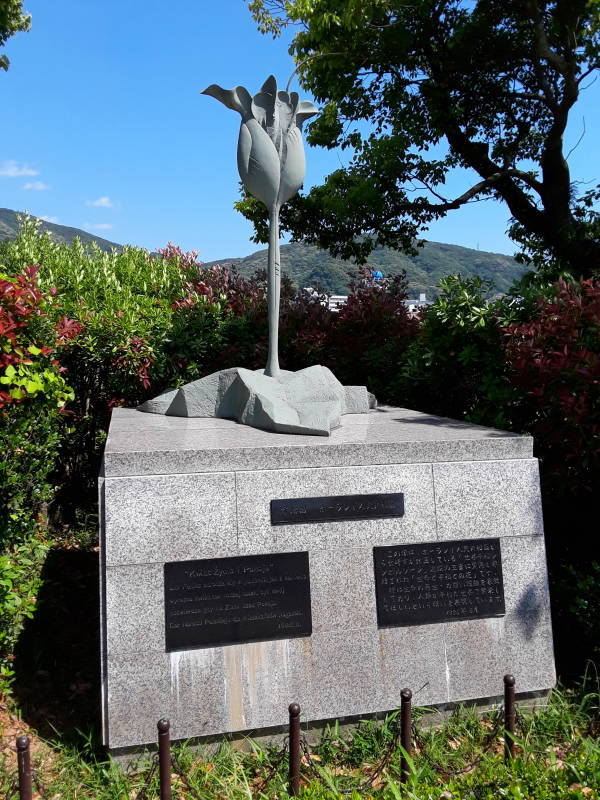
Above is Flower of Love and Peace, 1986, from Poland, with a plaque reading "Like a phoenix reborn from the ashes, like a flower grown out of stone, mankind affirms its existence when peace reigns over the Earth."
The Nagasaki Peace Park seemed to me to be much more balanced than the Hiroshima one.
In Hiroshima, the nuclear bomb was presented as an entirely pointless surprise attack.
In Nagasaki, it's described much more in context. The park here was established in 1950, 2 years before the first memorial was built in Hiroshima. But this presents the bombing as the end of a war in which Japan participated, and even started.
Below is a memorial to the Chinese victims. It says that about 40,000 Chinese citizens were forcibly brought to Japan to do slave labor in mines, on docks, and construction projects. Over 6,830 died within a year.
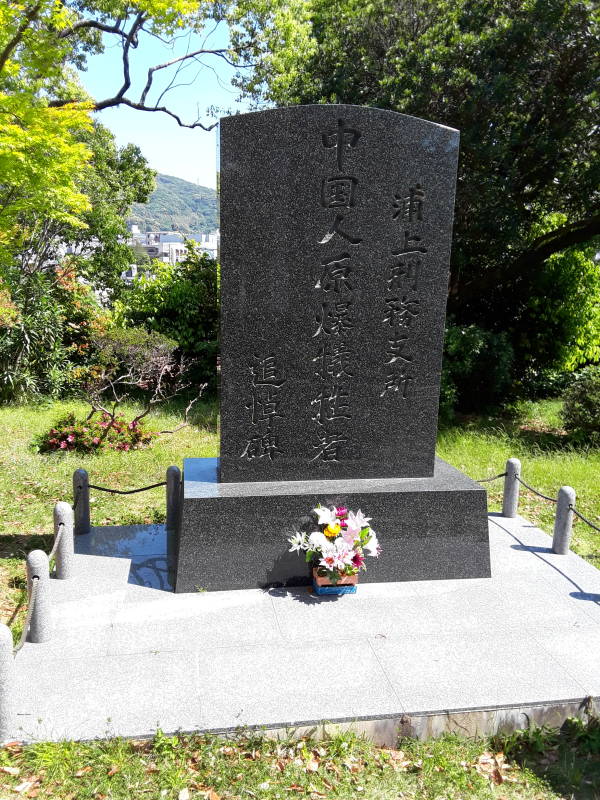
The Urakami Prison was about 300 meters north of the hypocenter. It was the closest major structure to the hypocenter. The bomb exploded at about 600 meters elevation.
The prison was crushed, all the prisoners and guards were instantly killed.
The Peace Park is built over the prison's ruins. Parts of its foundations remain.
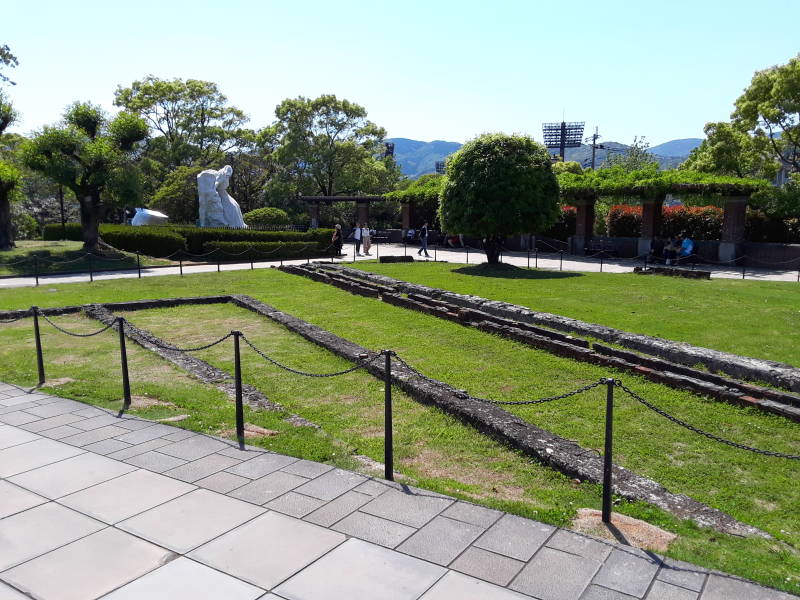
Saizo Kitamura's Peace Prayer Statue is at the center of the north end of the park.
It is intended as a prayer for the repose of the souls of the many nuclear bomb victims, and as a dedication to world peace.
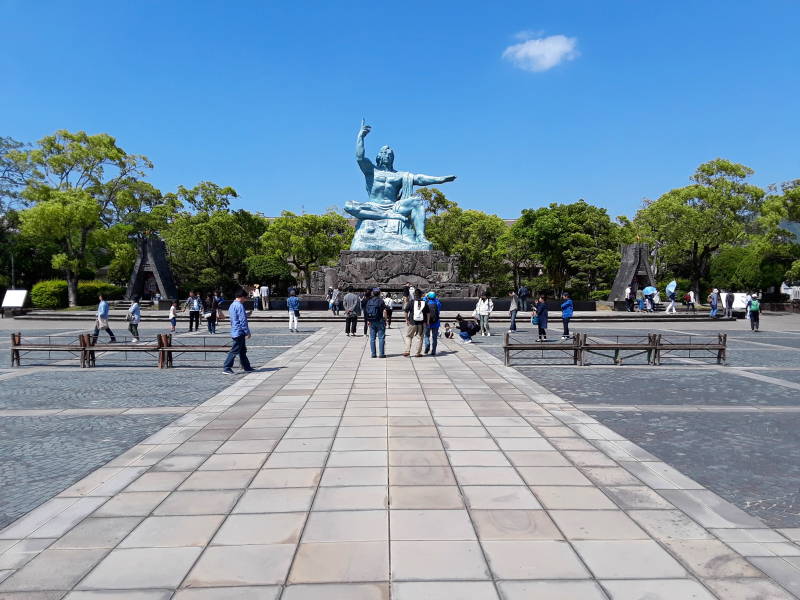
It is meant to symbolize the love of God and the mercy of the Buddha.
The right hand is raised to indicate the threat of the nuclear bomb, the left hand is extended horizontally toward peace, and the eyes are lightly closed while praying for the peace of the nuclear bomb victims.
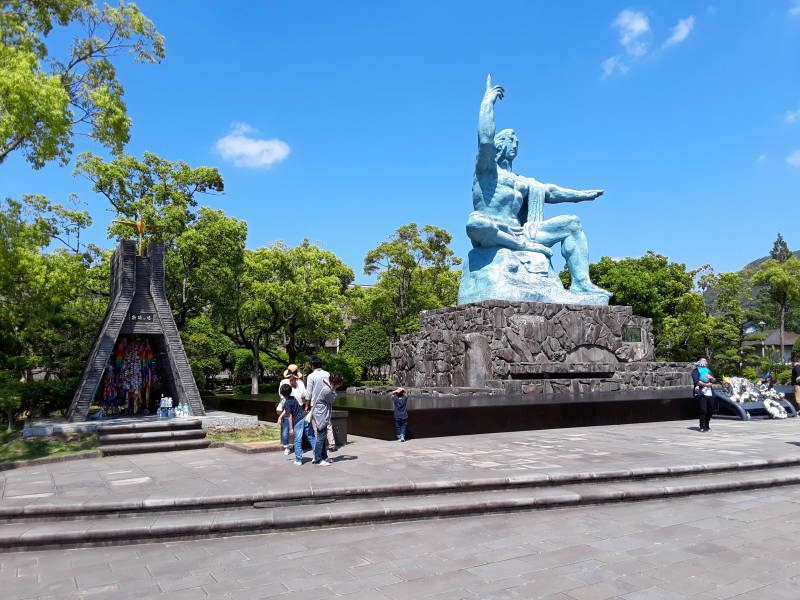
Back to the Center
I'll ride back to the center on the streetcar.
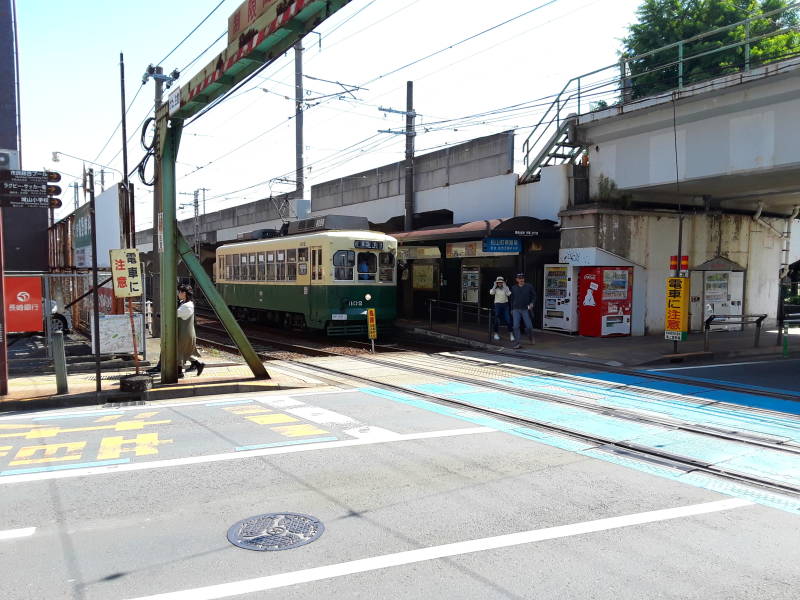
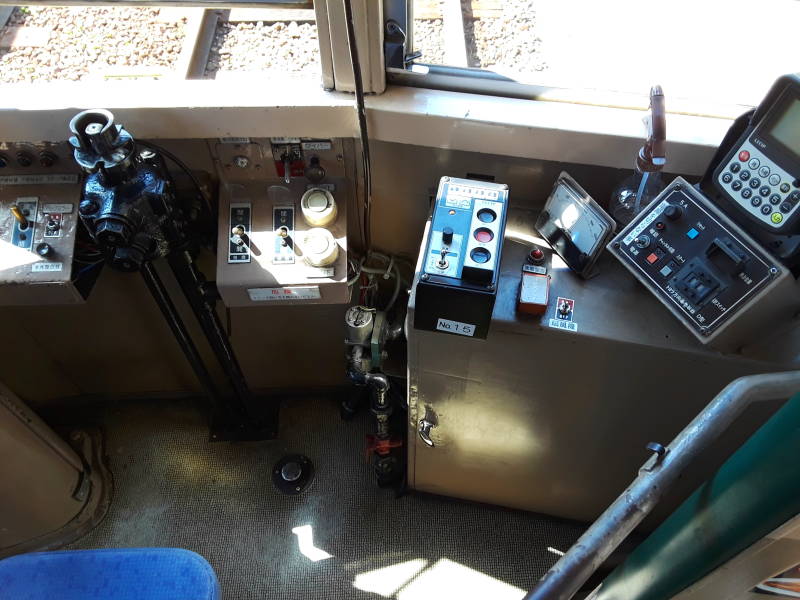
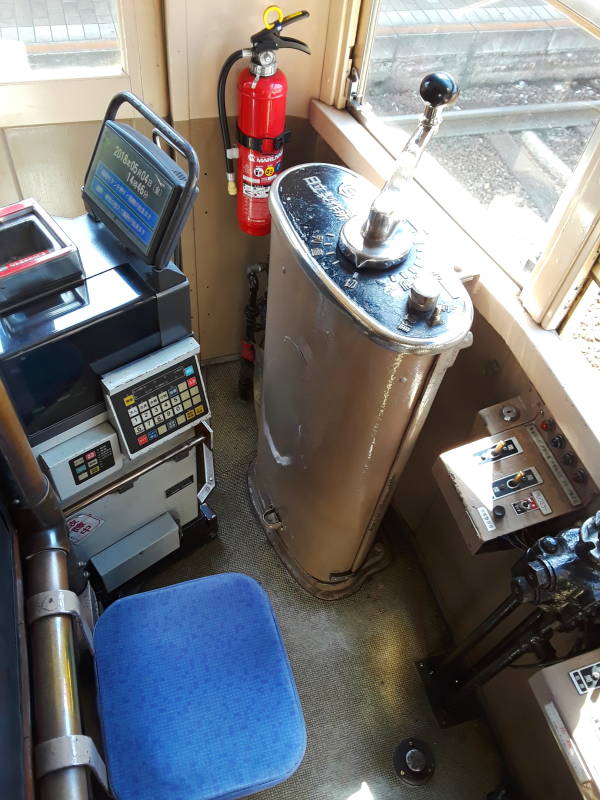
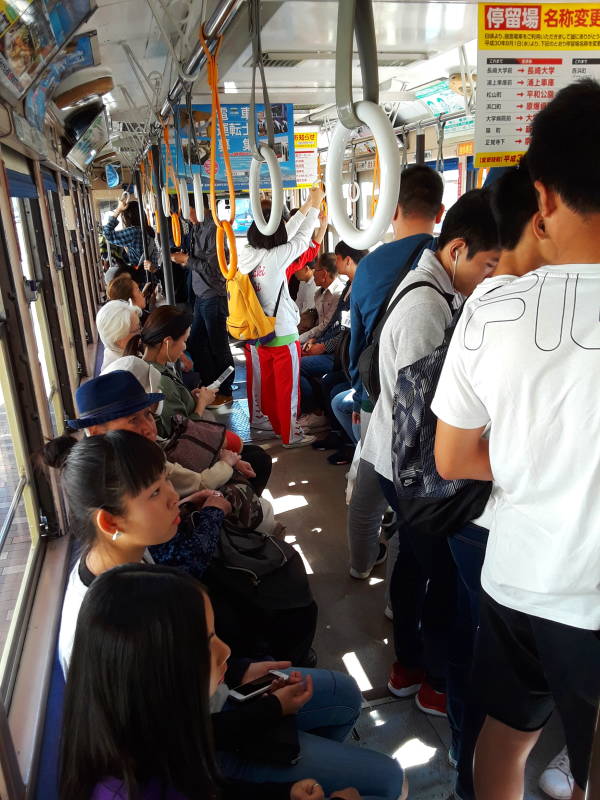
The above is specific to Nagasaki. Or maybe you want to explore other places in Japan.




































